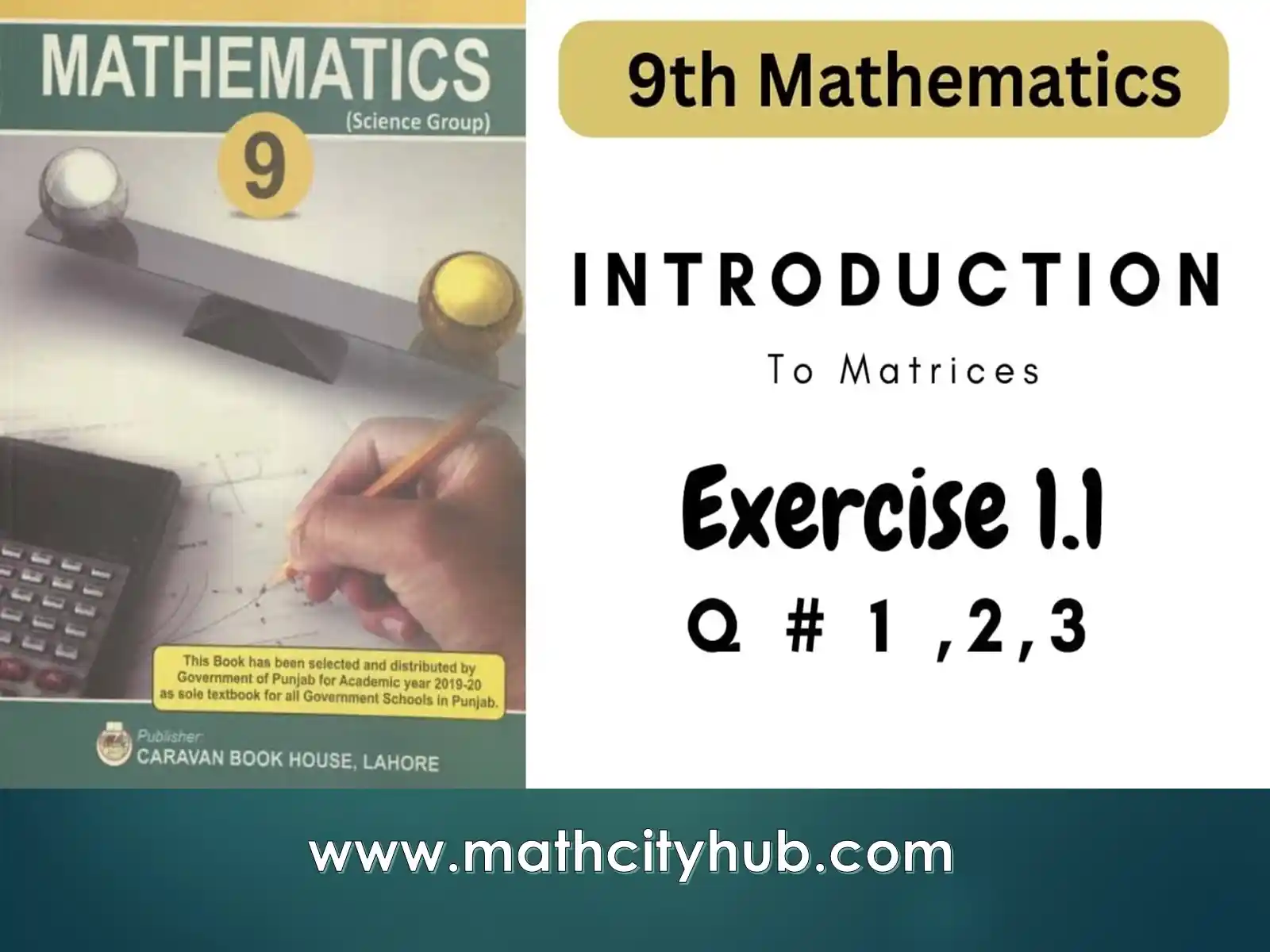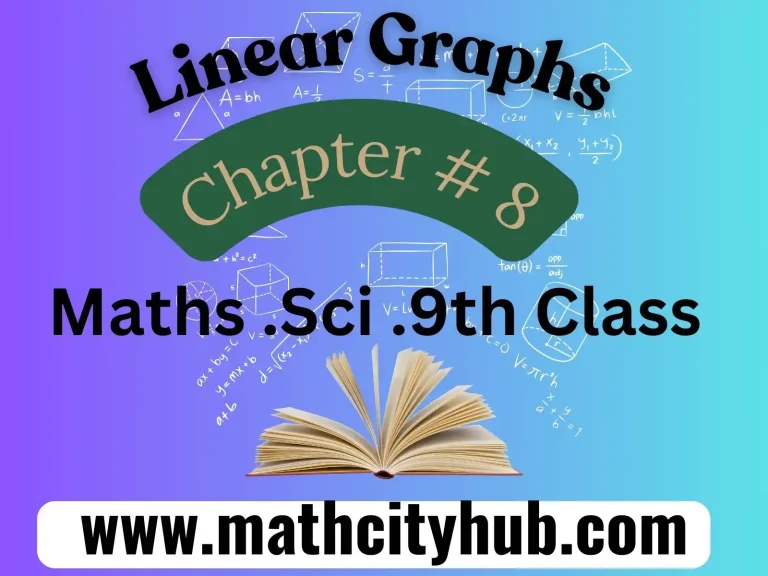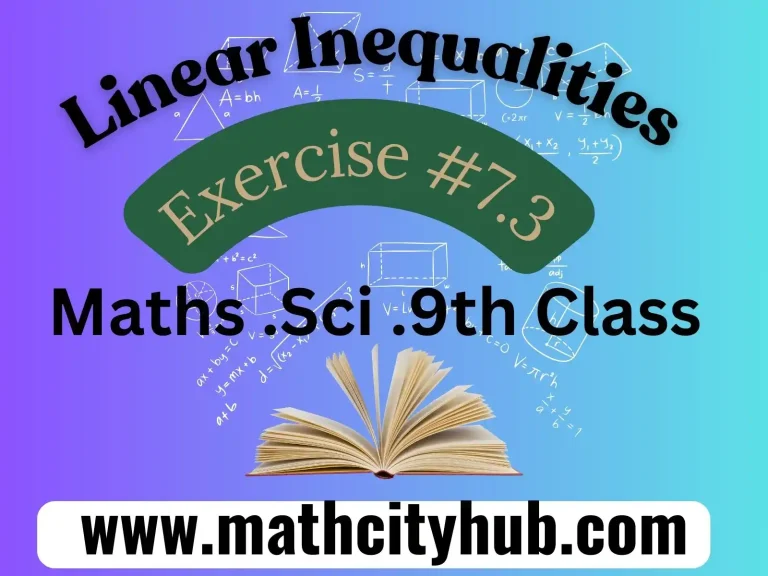Exercise 1.1:A matrix is a rectangular array of numbers, symbols, or expressions arranged in rows and columns. Matrices are widely used in mathematics, science, and engineering to represent and manipulate data.
Matrices are typically written in square brackets, with each element of the matrix separated by a comma. For example, the following is a 2×3 matrix:
A = [[1, 2, 3],
[4, 5, 6]]
This matrix has two rows and three columns. The first element of the matrix, 1, is located in the first row and first column. The second element, 2, is located in the first row and second column, and so on.
The dimensions of a matrix are denoted by the number of rows and columns that it has. For example, the matrix A above has dimensions 2×3, which means that it has two rows and three columns.
Matrices can be used to represent a wide variety of data, including:
- Systems of linear equations
- Transformations of geometric objects
- Data sets in statistics and machine learning
- Computer graphics images

What is matrices?
A matrix is a fundamental mathematical concept used in various fields such as linear algebra, computer science, physics, and engineering. It is a two-dimensional array of numbers, symbols, or expressions arranged in rows and columns. Matrices are used to represent and manipulate data in a structured way. Here are some key characteristics of matrices:
- Rows and Columns: A matrix consists of rows and columns. The number of rows and columns in a matrix is referred to as its dimensions. For example, a matrix with m rows and n columns is said to have dimensions m x n.
- Elements: The individual entries or elements of a matrix are the numbers or symbols located at specific positions within the rows and columns. Each element in a matrix is often denoted by its position, with subscripts indicating the row and column. For instance, A[i][j] refers to the element in the i-th row and j-th column of matrix A.
- Types of Matrices:
- Square Matrix: A square matrix has the same number of rows and columns (i.e., m = n).
- Row Matrix: A row matrix has only one row (1 x n dimensions).
- Column Matrix: A column matrix has only one column (m x 1 dimensions).
- Scalar Matrix: A scalar matrix is a square matrix with all diagonal elements equal and all other elements equal to zero.
- Identity Matrix: An identity matrix is a special square matrix where all diagonal elements are equal to 1, and all other elements are zero. It is often denoted as “I.”
- Zero Matrix: A zero matrix is a matrix where all elements are equal to zero.
- Operations: Matrices can be added, subtracted, and multiplied, subject to certain rules and conditions. Matrix multiplication is a bit different from scalar multiplication, and it involves taking the dot product of rows and columns.
- Applications: Matrices are used to represent a wide range of data and concepts, including linear equations, transformations in geometry, computer graphics, data analysis, and solving systems of linear equations.
Matrices are a powerful mathematical tool for solving problems that involve multiple equations or data points, making them essential in various areas of science and engineering.
Types of Algebra
Algebra is a broad branch of mathematics that deals with symbols, variables, and the rules for manipulating them to solve equations and study mathematical structures. There are several types or branches of algebra, each with its own focus and applications. Here are some of the main types of algebra:
- Elementary Algebra: This is the foundational algebra taught in the early stages of education. It covers basic operations like addition, subtraction, multiplication, and division with real numbers and introduces concepts like solving linear equations and inequalities.
- Abstract Algebra: Also known as modern algebra, this branch deals with algebraic structures like groups, rings, and fields. Abstract algebra abstracts the properties of arithmetic operations and studies algebraic systems in a more general and abstract way.
- Linear Algebra: Linear algebra primarily deals with vector spaces, matrices, and linear transformations. It plays a fundamental role in fields like physics, computer graphics, and engineering. Topics include solving systems of linear equations, eigenvalues, and eigenvectors.
- Boolean Algebra: Boolean algebra is used in computer science and digital circuit design. It deals with logical operations on binary variables, employing operations such as AND, OR, and NOT to manipulate logical expressions.
- Matrix Algebra: While linear algebra deals with vector spaces and linear transformations, matrix algebra focuses specifically on matrices and their operations. It is often used in data analysis, statistics, and engineering.
- Universal Algebra: Universal algebra studies algebraic structures in a more general sense, encompassing many types of algebraic systems. It seeks to find common structures and properties across various algebraic systems.
- Homological Algebra: This branch of algebra is concerned with algebraic structures and their homomorphisms. It is often used in abstract algebra, algebraic geometry, and algebraic topology.
- Boolean Ring Theory: This branch of abstract algebra focuses on rings with Boolean properties. It has applications in computer science and logic.
- Non-associative Algebra: In this type of algebra, the associative property of multiplication is not necessarily satisfied. This includes structures like Lie algebras, quasigroups, and octonions.
- Universal Algebra: Universal algebra deals with classes of algebraic structures and their homomorphisms. It provides a framework to study a wide range of algebraic systems.
- Commutative Algebra: Commutative algebra primarily deals with commutative rings and their properties. It has applications in algebraic geometry and number theory.
- Polynomial Algebra: Polynomial algebra focuses on polynomials and their properties, including factoring, roots, and polynomial equations. It is essential in various fields, including calculus and number theory.
These are just some of the many branches of algebra, each with its own unique characteristics and applications. Algebra is a versatile field of mathematics that plays a crucial role in numerous areas of science, engineering, and mathematics.
Basic Matrix Operations (Exercise 1.1:)
There are a number of basic operations that can be performed on matrices, including:
- Addition: Two matrices of the same dimensions can be added together by adding the corresponding elements of each matrix.
- Subtraction: Two matrices of the same dimensions can be subtracted from each other by subtracting the corresponding elements of each matrix.
- Scalar multiplication: A matrix can be multiplied by a scalar (a single number) by multiplying each element of the matrix by the scalar.
- Matrix multiplication: Two matrices can be multiplied together to produce a third matrix. The dimensions of the resulting matrix depend on the dimensions of the two original matrices.
- Applications of Matrices
Matrices have a wide variety of applications in mathematics, science, and engineering. Some examples include:
- Solving systems of linear equations
- Performing geometric transformations
- Analyzing data in statistics and machine learning
- Creating computer graphics images
- Modeling physical systems
- Controlling robots
Conclusion Exercise 1.1:
Matrices are a powerful tool for representing and manipulating data. They have a wide variety of applications in mathematics, science, and engineering. Exercise 1.1:
Here are some additional examples of how matrices are used in the real world:
- Economics: Matrices can be used to model economic systems, such as the interactions between different industries or the relationship between supply and demand.
- Physics: Matrices can be used to represent and solve physical problems, such as the motion of objects or the behavior of electromagnetic waves.
- Engineering: Matrices are used in engineering to design and analyze structures, systems, and devices.
- Computer science: Matrices are used in computer science to develop algorithms and data structures for a wide variety of tasks, such as image processing and machine learning.
Order of matrices
The order of a matrix is the number of rows and columns that it has. It is written as m × n, where m is the number of rows and n is the number of columns.
For example, the following matrix has 3 rows and 2 columns:
[1 2][3 4][5 6]Therefore, its order is 3 × 2.
Another example:
[1 2 3][4 5 6][7 8 9][10 11 12]This matrix has 4 rows and 3 columns, so its order is 4 × 3.
Note: Two matrices can only be multiplied if they have compatible dimensions. This means that the number of columns in the first matrix must be equal to the number of rows in the second matrix. For example, a 3 × 2 matrix can be multiplied by a 2 × 4 matrix, but it cannot be multiplied by a 4 × 2 matrix. Exercise 1.1:

Equal matrix
Exercise 1.1: Two matrices are said to be equal if they have the same order and their corresponding elements are equal. In other words, two matrices A and B are equal if they have the same number of rows and columns, and for each element (i,j), aij=bij.
Examples:
The following two matrices are equal:
A = [[1, 2], [3, 4]]B = [[1, 2], [3, 4]]Both matrices have the same order (2 × 2) and their corresponding elements are equal.
The following two matrices are also equal:
C = [[0, 1, 2], [3, 4, 5]]D = [[0, 1, 2], [3, 4, 5]]Both matrices have the same order (2 × 3) and their corresponding elements are equal.
Note: Two matrices cannot be equal if they have different orders. For example, the following two matrices are not equal:
E = [[1, 2, 3]]F = [[1, 2], [3, 4]]Matrix E has 1 row and 3 columns, while matrix F has 2 rows and 2 columns. Therefore, they have different orders and cannot be equal.
A row in a matrix is a horizontal line of elements. Exercise 1.1: A column in a matrix is a vertical line of elements.
For example, the following matrix has 3 rows and 2 columns:
[1 2][3 4][5 6]The first row of the matrix is [1 2], the second row is [3 4], and the third row is [5 6]. The first column of the matrix is [1 3 5], and the second column is [2 4 6].
Another example:
[1 2 3][4 5 6][7 8 9][10 11 12]This matrix has 4 rows and 3 columns. The first row is [1 2 3], the second row is [4 5 6], the third row is [7 8 9], and the fourth row is [10 11 12]. The first column is [1 4 7 10], the second column is [2 5 8 11], and the third column is [3 6 9 12].
Note: A matrix can have any number of rows and columns, but it must be rectangular. This means that all rows must have the same number of elements, and all columns must have the same number of elements.
Question: What is a matrix?
Answer: A matrix is a rectangular array of numbers or symbols arranged in rows and columns. It is a powerful tool for representing and manipulating data in many different fields, including mathematics, physics, engineering, and computer science. Exercise 1.1:
Question: What is the order of a matrix?
Answer: The order of a matrix is the number of rows and columns that it has. It is written as m × n, where m is the number of rows and n is the number of columns.
Question: What are some different types of matrices?
Answer: There are many different types of matrices, but some of the most common include:
- Square matrix: A square matrix has the same number of rows and columns.
- Diagonal matrix: A diagonal matrix has non-zero elements only on the main diagonal.
- Upper triangular matrix: An upper triangular matrix has non-zero elements only above the main diagonal.
- Lower triangular matrix: A lower triangular matrix has non-zero elements only below the main diagonal.
- Symmetric matrix: A symmetric matrix is equal to its transpose.
- Antisymmetric matrix: An antisymmetric matrix is equal to the negative of its transpose.
An equal matrix is a term that is not commonly used in mathematics. It may be a misunderstanding or a miscommunication of the concept. However, it’s possible that you meant to ask about “equal matrices” or “equivalent matrices.”
- Equal Matrices:
- Two matrices are considered equal if they have the same dimensions (i.e., the same number of rows and columns) and their corresponding elements are equal. In other words, matrices A and B are equal if A(i, j) = B(i, j) for all valid values of ‘i’ and ‘j,’ where ‘i’ represents the row and ‘j’ represents the column.
- Equivalent Matrices:
- Equivalent matrices are matrices that can be transformed into each other through a sequence of elementary row operations. These operations include multiplying a row by a nonzero scalar, adding one row to another, and swapping rows. Equivalent matrices represent the same linear system and have the same solutions to systems of linear equations.
It’s important to clarify whether you intended to ask about equal matrices or equivalent matrices, as they have different meanings and use cases in mathematics.
Question: How can matrices be used?
Answer: Matrices can be used for a variety of tasks, such as:
- Solving systems of linear equations
- Representing geometric transformations
- Performing statistical analysis
- Machine learning
conclusion Introduction to matrices
In conclusion, matrices are a fundamental mathematical concept that provides a structured way to represent and manipulate data in a two-dimensional array format. They find extensive applications in various fields, including linear algebra, computer science, physics, and engineering.
Matrices are characterized by their rows and columns, with each element identified by its position within the matrix. These arrays can be added, subtracted, and multiplied, following specific rules and conditions, and play a crucial role in solving systems of linear equations, representing transformations in geometry, and much more.
Matrices are not only a versatile mathematical tool but also a foundational element in problem-solving across a wide range of disciplines. Their ability to handle complex data and relationships between variables makes them an essential concept for understanding and solving real-world problems.
As such, an understanding of matrices is a valuable skill for students and professionals in mathematics, science, and engineering, enabling them to tackle a variety of analytical challenges effectively.
Is this conversation helpful so far?

Question: Can you give me an example of a question that can be answered using matrices?
Answer: Sure. Here is an example:
Suppose you have a system of two linear equations, such as:
2x + 3y = 5
4x + 6y = 10
This system can be represented by the following matrix equation:
[[2 3] [4 6]] * [x y] = [5 10]
To solve for the values of x and y, you can use Gaussian elimination to invert the matrix on the left-hand side of the equation and multiply it by the vector on the right-hand side. This will give you the solution vector [x y].
Matrices are an essential concept in linear algebra, and they are used in various fields of mathematics, science, engineering, and computer science. A matrix is a two-dimensional array of numbers, symbols, or expressions organized into rows and columns. The size or dimensions of a matrix are described by the number of rows and columns it contains. A matrix with ‘m’ rows and ‘n’ columns is often denoted as an “m x n” matrix. Here’s an example of a matrix:
Example 1: A 2×3 Matrix
Uses Of The Matrix
Matrices are widely used in various fields for a multitude of applications due to their versatility and ability to represent and manipulate data efficiently. Here are some detailed uses of matrices in different fields:
- Mathematics:
- Linear Algebra: Matrices are at the core of linear algebra, used to solve systems of linear equations, compute eigenvalues and eigenvectors, and represent linear transformations. They provide a fundamental framework for understanding vector spaces and linear transformations.
- Physics:
- Quantum Mechanics: Matrices are used to represent quantum states and operators in quantum mechanics. Operators like the Hamiltonian matrix describe the time evolution of quantum systems.
- Computer Science:
- Graphics and Computer Games: Matrices are essential for 2D and 3D graphics transformations. They are used to represent the position, rotation, and scaling of objects in a 3D scene.
- Data Compression: In image and video compression, matrices like discrete cosine transforms (DCT) and singular value decomposition (SVD) are employed to reduce data size while preserving essential information.
- Engineering:
- Structural Analysis: In civil and mechanical engineering, matrices are used for finite element analysis to simulate the behavior of complex structures under different loads and conditions.
- Control Systems: Control engineers use state-space representations, which involve matrices, to model and analyze dynamic systems like robots and industrial processes.
- Statistics:
- Multivariate Analysis: Matrices are used for multivariate statistics, including principal component analysis (PCA) and factor analysis to analyze and reduce the dimensionality of data.
- Covariance and Correlation Matrices: These matrices are used to summarize relationships between multiple variables in statistics.
- Economics:
- Input-Output Matrices: These matrices describe the economic relationships between different sectors in an economy. They are used to analyze the effects of changes in one sector on the entire economy.
- Machine Learning and Data Science:
- Feature Transformation: Matrices are used for feature scaling, dimensionality reduction (e.g., PCA), and feature extraction in machine learning to preprocess data.
- Recommendation Systems: Matrices like user-item interaction matrices are used in collaborative filtering to make personalized recommendations.
- Deep Learning: Neural networks consist of layers of nodes (neurons) with weights. The weights are stored in matrices and updated during training using gradient descent.
- Biology and Bioinformatics:
- Genomics: Matrices are used to represent genetic data, such as DNA sequences, gene expression data, and protein-protein interaction networks.
- Phylogenetics: Matrices are used to represent character data in evolutionary trees, helping to infer the relationships between species.
- Social Sciences:
- Social Network Analysis: Matrices are used to represent social networks, where nodes (individuals or entities) and their relationships are modeled. This is vital for understanding information flow and influence in social systems.
- Finance:
- Portfolio Optimization: Matrices are used to calculate risk and returns in financial portfolios. Modern portfolio theory uses matrices to find the optimal asset allocation.
- Operations Research:
- Linear Programming: Matrices are used to model and solve optimization problems in areas like transportation, resource allocation, and production planning.
In summary, matrices serve as a fundamental mathematical tool with widespread applications across various fields, enabling researchers and professionals to model, analyze, and solve complex problems efficiently. Their versatility makes them indispensable in modern science and technology.
Equal Matrix And Order of Matrix
Order of a Matrix:
The order of a matrix is a way to describe its size and dimensions. It is typically represented as “m x n,” where ‘m’ represents the number of rows, and ‘n’ represents the number of columns in the matrix. In other words, an ‘m x n’ matrix has ‘m’ rows and ‘n’ columns.
For example, if you have a matrix with 3 rows and 2 columns, you would denote its order as “3 x 2.” This means it is a 3-row by 2-column matrix.
Equal Matrices:
Two matrices are said to be equal if they have the same dimensions (the same order) and if each corresponding element in the matrices is equal. In other words, for two matrices A and B to be equal, the following conditions must be met:
They must have the same number of rows.
They must have the same number of columns.
For each element in the matrix A at position (i, j), it must be equal to the element in the matrix B at the same position (i, j).
Here’s an example to illustrate equal matrices:
Matrix A:
css
Copy code
A = | 1 2 |
| 3 4 |
Matrix B:
css
Copy code
B = | 1 2 |
| 3 4 |
In this case, matrices A and B have the same order (2 x 2), and each corresponding element in A and B is equal. Therefore, A and B are equal matrices.
Here’s another example where two matrices are not equal:
Matrix C:
makefile
Copy code
C = | 1 2 |
| 3 4 |
Matrix D:
makefile
Copy code
D = | 1 2 |
| 5 6 |
In this case, matrices C and D have the same order (2 x 2) in terms of dimensions, but they are not equal because the elements in the (2, 2) position differ (4 in C and 6 in D).
A matrix is a fundamental mathematical and computational concept that is widely used in various fields such as mathematics, physics, engineering, computer science, and more. It provides a structured way to organize and manipulate data, making it a versatile and essential tool in many areas of study and application.
Here’s an introduction to matrices:
- Definition: A matrix is a two-dimensional array of numbers, symbols, or expressions arranged in rows and columns. It is typically enclosed within square brackets or vertical bars. The individual elements in a matrix are referred to as entries.
- Dimensions: A matrix is characterized by its dimensions, which are represented as “m x n,” where ‘m’ is the number of rows, and ‘n’ is the number of columns. The order of a matrix provides valuable information about its size and shape.
- Notation: Matrices are often denoted using capital letters, with specific elements or entries represented by subscripts. For example, the element in the i-th row and j-th column of a matrix A is denoted as A[i][j] or A(i, j).
- Types of Matrices:
- Row Matrix: A matrix with only one row and multiple columns.
- Column Matrix: A matrix with only one column and multiple rows.
- Square Matrix: A matrix with the same number of rows and columns (m = n).
- Zero Matrix: A matrix in which all entries are zero.
- Identity Matrix: A square matrix with ones on the main diagonal (from the top-left to the bottom-right) and zeros elsewhere.
- Transpose: The transpose of a matrix is obtained by interchanging its rows and columns.
- Matrix Operations:
- Addition and Subtraction: Matrices of the same dimensions can be added or subtracted by performing the operation element-wise.
- Scalar Multiplication: You can multiply a matrix by a scalar (a single number), which multiplies every element in the matrix by that scalar.
- Matrix Multiplication: Matrix multiplication is a more complex operation. To multiply two matrices, the number of columns in the first matrix must match the number of rows in the second matrix.
- Inverse Matrix: Inverse matrices are used for solving systems of linear equations. Not all matrices have an inverse.
- Applications:
- Linear algebra: Matrices are extensively used for solving systems of linear equations, eigenvalue problems, and transformations.
- Computer graphics: Transformations, such as translation, rotation, and scaling, are represented using matrices.
- Data analysis: Matrices are used to store and manipulate data, especially in statistical and machine learning applications.
- Physics and engineering: Matrices are used to model and solve various physical systems and engineering problems.
Matrices provide a powerful and compact way to represent and manipulate data and relationships between data points, making them a fundamental tool in many areas of mathematics and science.
cssCopy code
A = | 1 2 3 | | 4 5 6 |
In this example, matrix A has 2 rows and 3 columns, so it’s a 2×3 matrix. The elements of the matrix are the numbers inside the rectangular array. In this case, the elements of A are 1, 2, 3, 4, 5, and 6.
Matrices can be used for various purposes, and they have many operations associated with them. Here are some key concepts related to matrices:
- Matrix Elements: The individual numbers within a matrix are called elements. In the example above, the elements of matrix A are 1, 2, 3, 4, 5, and 6.
- Row and Column Vectors: A row vector is a matrix with a single row, and a column vector is a matrix with a single column. For example, the first row of matrix A can be considered a row vector [1 2 3], and the first column can be considered a column vector [1 4].
- Matrix Operations:
- Addition: You can add two matrices of the same dimensions by adding their corresponding elements.
- Subtraction: Similar to addition, but you subtract corresponding elements.
- Scalar Multiplication: You can multiply a matrix by a scalar (a single number), which multiplies each element of the matrix by that scalar.
- Matrix Multiplication: This operation involves multiplying two matrices together. The number of columns in the first matrix must be equal to the number of rows in the second matrix.
- Transpose: The transpose of a matrix is obtained by flipping its rows and columns. It is denoted as A^T.
- Special Matrices:
- Identity Matrix: A square matrix with ones on the main diagonal and zeros elsewhere. It is often denoted as “I.”
- Zero Matrix: A matrix in which all elements are zero.
- Diagonal Matrix: A matrix in which all non-diagonal elements are zero.
- Symmetric Matrix: A square matrix that is equal to its transpose.
Matrices have applications in various fields, such as solving systems of linear equations, representing transformations in geometry, image processing, and solving optimization problems. They are a fundamental tool in data science, machine learning, and computer graphics, among many other areas.
Our Latest Blogs:
- Exercise.2.1: Real Numbers
- 9th-Math-Ch-1-Review: Matrices And Determinants
- Exercise.1.6: Solution Of Simultaneous Linear Equations
- Exercise.1.5: Multiplicative Inverse a Of Matrices
- Exercise.1.4: Multiplication Of Matrices
- Exercise 1.3: Addition And Subtraction Of Matrices
FULL BOOK 9TH MATH
EXERCISE #1.1
Azam Bodla
M.Phil. Mathematics, Content Writer, SEO Expert
Web Developer, Online Tutor
Call or WhatsApp: +923059611600
Gmail:azambodlaa@gmail.com






